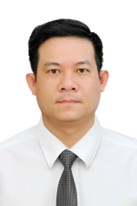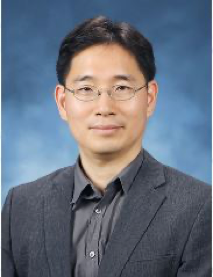1. Introduction:
Communication and Signal processing Research Group (COMSIG) is a research group funded by Ton Duc Thang University and under the administration of Faculty of Electrical and Electronics Engineering. The goal of the WICOM team is to come up with research solutions to deploy the signal processing in the communication systems and robotics industry as well as increase capacity, operability based on bandwidth usage, larger coverage area and information transmission by multiple antennas of 5G, 6G networks in the future.
2. Mission and vision:
The Internet of Things (IoT) communication system has become an importation application in the 5G and beyond networks. With the evolution of IoT, billions of connected IoT users (IoTUs) will provide various applications, e.g., smart city, health, military, and agriculture. New applications and business models in the future IoT networks require new performance criteria such as massive connectivity, security, trustworthiness, broad coverage, ultra-low latency, high throughput, ultra-reliable, et al. for a huge number of IoT devices. To meet these requirements, the evolving Long Term Evolution (LTE) and 5G technologies are expected to provide new connectivity interfaces for future IoT applications. Besides, signal processing also plays an important role in the fields of 5G, IoT, telecommunications, as well as in the robotics industry, etc. These perspectives impose significant design challenges for academic and industrial researchers. This project aims to propose research solutions to deploy 5G and IoT networks as well as apply advanced signal processing for beyond networks (6G, symbiotic, backscatter, intelligent reflecting surfaces, massive mimo, etc.), and control techniques, robot manufacturing in the future. Moreover, other solutions should also be proposed for future wireless networks to provide capacity improvements through the use of larger bandwidths, broader coverage, and multi-antenna transmission. The others in signal processing should improve AI technology to make robots work more accurately as well as helping the information systems to decode and encode signals better.
3. Research areas:
A. Energy harvesting (EH) enabled cooperative networks: in cooperative networks, EH techniques can be applied as green communication for amplify-and-forward (AF) and Decode-and-Forward (DF) relaying. Moreover, the relay nodes can be powered from an RF signal source or other microwave-enable wireless energy transfer sources in this technology.
B. Cognitive radio: cognitive radio can improve the spectral efficiency by facilitating the secondary users (SUs) to share the spectrum with the primary users (PUs). In addition, wireless power technology provides the cognitive radio a greener alternative to harness energy for its operation, which also helps enhance its lifetime under the energy constraints.
C. Physical layer security: The concept of physical layer security is that eavesdroppers try to overhear information from a source and relay nodes. The main research in this field will focus on how to prevent wiretap channels, evaluate the quality of the system, and find the solutions to enhance the system quality.
D. Satellite and UAVs networks: Satellite communications have become popular in the fifth and sixth generation (5G and 6G) communications due to their advantages in various applications such as navigation, disaster relief, defense, and inherent broadcasting/multicasting capabilities. On the other hand, Unmanned Aerial Vehicles (UAVs) have great potential applications to future communications systems thanks to their high mobility and flexibility. Specifically, UAVs can be utilized to connect ground IoTs or to establish communications in case of damaged infrastructure in disaster regions. Moreover, UAV devices are also very important to connect the signals transmitted from the satellites to the ground users.
E. Signal processing in Robotic: Signal processing output is highly significant in robots and autonomous systems mainly for managing uncertainty. Signal processing ensures that there is sufficient sensor data, future autonomous actions are controlled and communication lines are optimal.
4. Members:
|

|
Associate Prof. Nguyen Nhat TanPositions: Head of COMSIG Research Group Areas of expertise: cooperative network, physical layer security, signal processing. Research track record: • ISI papers: 100 • Total ISI Citations: 888 • ISI H-index: 20 • At most 10 top journals: - IEEE Transaction on Vehicular Technology. - IEEE Transactions on Mobile Computing. - IEEE Journal on Selected Areas in Communications. - IEEE Transactions on Aerospace and Electronic Systems. - IEEE Internet of Things. - IEEE Wireless Communications Letters. - IEEE Systems Journal. - IEEE Sensors Journal. - IEEE Access. - IEEE Open Journal of the Communications Society. |
|
|
Prof. Miroslav VoznakPositions: Member of COMSIG Research Group Areas of expertise: cooperative network, network security, speech signal processing. Research track record: • ISI papers: over 200. • Total ISI Citations: 1184. • ISI H-index: 19 • At most 5 top journals: - IEEE Transaction on Vehicular Technology. - IEEE Internet of Things. - Ad-hoc networks. - IEEE Access. - Computer network. |
|
|
Prof. Byung-Seo KimPositions: Member of COMSIG Research Group Areas of expertise: cooperative networks, IoT networks. Research track record: • ISI papers: over 150 • Total ISI Citations: 2206 • ISI H-index: 23 • At most 5 top journals: - IEEE Access. - IEEE Internet of Things. - Future Generation Computer Systems. - Sensors. - Journal of Network and Computer Applications. |

|
Dr. Le Anh VuPositions: Member of COMSIG Research Group Areas of expertise: reconfigurable robotics, robotic perception, robotic path planning, computer vision, digital image processing, signal processing. Research track record: • ISI papers: 72 • Total ISI Citations: 1291 • ISI H-index: 24 • At most 6 top journals: - IEEE Transactions on Automation Science and Engineering. - IEEE Transactions on Robotics. - IEEE/ASME Transactions on Mechatronics. - IEEE Robotics and Automation Letters. - Automation in Construction. - Expert Systems with Applications. |

|
Dr. Lam-Thanh TuPositions: Member of COMSIG Research Group Areas of expertise: stochastic geometry, wireless communications, LoRa networks Research track record: • ISI papers: 59 • Total ISI Citations: 760 • ISI H-index: 15 • At most 5 top journals:
|

|
Dr. Tran Hoang Quang MinhPositions: Member of COMSIG Research Group Areas of expertise: reconfigurable robotics, robotic perception, robotic path planning, cooperative network, physical layer security, signal processing. Research track record: • ISI papers: 52 • Total ISI Citations: 420 • ISI H-index: 11 • At most 5 top journals: - IEEE Access. - ROBOTICS AND AUTONOMOUS SYSTEMS - Ad Hoc Networks. - ADVANCES IN ELECTRICAL AND ELECTRONIC ENGINEERING. - PERFORMANCE EVALUATION. |

|
Dr. Nguyen Huu Khanh NhanPositions: Member of COMSIG Research Group Areas of expertise: Electronic devices for control systems, VLSI design, Data communications and networking. Research track record: • ISI papers: 42 • Total ISI Citations: 472 • ISI H-index: 13 • At most 5 top journals: - IEEE Transactions on Robotics. - IEEE Access - Engineering Applications of Artificial Intelligence. - Intelligent & Robotic Systems. - Expert Systems with Applications. |
5. Publications:
- Van-Duc Phan, Tan N. Nguyen, Anh Vu Le and Miroslav Voznak, "A Study of Physical Layer Security in SWIPT-Based Decode-And-Forward Relay Networks with Dynamic Power Splitting", Sensors, Vol.21, No.17, Art.no. 5692, Aug. 2021. (SCIE)
- Phu Tran Tin, Tan N. Nguyen, Dinh-Hieu Tran, Miroslav Voznak, Van-Duc Phan and Symeon Chatzinotas,"Performance Enhancement for Full-Duplex Relaying with Time Switching-Based SWIPT in Wireless Sensors Networks", Sensors, Vol.21, No.11, Art.no 3847, Jun.2021. (SCIE)
- V.Prabakaran, Anh Vu Le, P.T.Kyaw, R.E.Mohan, P.Kandasamy, Tan N. Nguyen and M.Kannan, "Hornbill: A Self-Evaluating Hydro-Blasting Reconfigurable Robot for Ship Hull Maintenance", IEEE Access, Vol.8, pp.193790-193800, Oct.2020. (SCIE)
- Ha Duy-Hung, Tan N. Nguyen, Minh Tran, Xingwang Li, Phuong T. Tran and Miroslav Voznak,"Security Analysis of a Two-Way Half-Duplex Wireless Relaying Network Using Partial Relay Selection and Hybrid TPSR Energy Harvesting at Relay Nodes", IEEE Access, Vol.8, pp.187165-187181, Oct.2020. (SCIE)
- Tan N. Nguyen, Phuong T. Tran and Miroslav Voznak,"Wireless Energy Harvesting Meets Receiver Diversity: A Successful Approach for Two-Way Half-Duplex Relay Networks over Block Rayleigh Fading Channel", Computer Networks, Vol.172, May.2020. (SCIE)
- Ba Cao Nguyen, Tran Manh Hoang, Phuong T. Tran, Tan N. Nguyen,"Outage Probability of NOMA System with Wireless Power Transfer at Source and Full-duplex Relay", AEU-International Journal of Electronics and Communications, Vol.116, Mar.2020. (SCIE)
- Tan N. Nguyen, T.H.Q.Minh, Phuong T. Tran, Miroslav Voznak, T.T.Duy, Thanh-Long Nguyen and Phu Tran Tin,"Performance Enhancement for Energy Harvesting Based Two-Way Relay Protocols in Wireless Ad-hoc Networks with Partial and Full Relay Selection Methods", Ad-hoc networks, Vol.84, pp. 178-187, Mar.2019. (SCIE)
- Tan N. Nguyen, Lam-Thanh Tu, Peppino Fazio, Trinh Van Chien, Cuong V. Le, Huynh Thi Thanh Binh, and Miroslav Voznak, “On the Dilemma of Reliability or Security in Unmanned Aerial Vehicle Communications Assisted by Energy Harvesting Relaying“, IEEE Journal on Selected Areas in Communications, Sep. 2023. (SCIE, Accepted)
- Tan N. Nguyen, Bui Vu Minh, Dinh-Hieu Tran, Thanh-Lanh Le, Anh-Tu Le, Quang-Sang Nguyen, and BYUNG MOO LEE, “Security-Reliability Analysis of AF Full-Duplex Relay Network Using Self-Energy Recycling and Deep Neural Networks“, Sensors, Vol. 23, No. 17, Art. no. 7618, Sep. 2023. (SCIE)
- Dinh Tung Vo, Trinh Van Chien, Tan N. Nguyen, Dinh-Hieu Tran, Miroslav Voznak, BYUNG SEO KIM, and Lam Thanh Tu, “SWIPT-Enabled Cooperative Wireless IoT Networks with Friendly Jammer and Eavesdropper: Outage and Intercept Probability Analysis“, IEEE Access, Vol. 11, pp. 86165-86177, Aug. 2023. (SCIE)
- Lam-Thanh Tu, Tan N. Nguyen, Phuong T. Tran, Tran Trung Duy, and Quang-Sang Nguyen, “Performance statistics of broadcasting networks with receiver diversity and Fountain codes“, Journal of Information and Telecommunication, Jun. 2023. (ESCI+SCOPUS)
- Tan N. Nguyen, Dinh-Hieu Tran, Trinh Van Chien, Van-Duc Phan, Miroslav Voznak, Symeon Chatzinotas, Zhiguo Ding, and H. Vincent Poor, “Security-Reliability Trade-Offs for Satellite-Terrestrial Relay Networks with a Friendly Jammer and Imperfect CSI”, IEEE Transactions on Aerospace and Electronic Systems, May. 2023. (SCIE)
- Quang Sang Nguyen, Tan N. Nguyen, and Lam-Thanh Tu, “On the Security and Reliability Performance of SWIPT-enabled Full-Duplex Relaying in the Non-Orthogonal Multiple Access Networks“, Journal of Information and Telecommunication, May. 2023. (ESCI+SCOPUS)
- Lubos Rejfek, Karel Juryca, Tan N. Nguyen, Ladislav Beran, and Miroslav Voznak, “Whitening filters application for ionospheric propagation delay extraction“, IEEE Transactions on Instrumentation and Measurement, Vol. 72, Art.no. 6503308, May. 2023. (SCIE)
- Nhat-Tien Nguyen, Hong-Nhu Nguyen, Ngoc-Long Nguyen, Anh-Tu Le, Tan N. Nguyen, and Miroslav Voznak, “Performance Analysis of NOMA-based Hybrid Satellite-Terrestrial Relay System Using mmWave Technology“, IEEE Access, Vol. 11, pp. 10696-10707, Jan. 2023. (SCIE)
- Dinh Thi Tam, Ba Cao Nguyen, Sinh Cong Lam, Nguyen Van Vinh, and Tan N. Nguyen, “SER Performance of Millimeter-Wave Communications with Multiple Reconfigurable Intelligent Surfaces and Transmit Antenna Selection“, AEU-International Journal of Electronics and Communications, Vol. 160, Art. no. 154517, Jan. 2023. (SCIE)
- Lam-Thanh TU, Van-Duc Phan, Tan N. Nguyen, Phuong T. Tran, Tran Trung Duy, Quang-Sang Nguyen, Nhat-Tien Nguyen, and Miroslav Voznak, “Performance Analysis of Multi-hop Full-duplex NOMA Systems With Imperfect Interference Cancellation and Near-Field Path-Loss“, Sensors, Vol. 23, No. 1, Art. no. 524, Jan. 2023. (SCIE)
- Ngoc-Long Nguyen, Lam-Thanh TU, Tan N. Nguyen, Phuong-Loan T. Nguyen, and Quang-Sang Nguyen, “Performance on Cognitive Broadcasting Networks employing Fountain Codes and Maximal Ratio Transmission“, RadioEngineering, Vol. 32, No. 1, Nov. 2022. (SCIE)
- Tan N. Nguyen, Dinh-Hieu Tran, Trinh Van Chien, Van-Duc Phan, Nhat-Tien Nguyen, Miroslav Voznak, Symeon Chatzinotas, Bjorn Ottersten, and H. Vincent Poor, “Physical Layer Security in AF-Based Cooperative SWIPT Sensor Networks“, IEEE Sensors Journal, Vol. 23, No. 1, pp. 689-705, Nov. 2022. (SCIE)
- Tan N. Nguyen, Dinh-Hieu Tran, Trinh Van Chien, Van-Duc Phan, Miroslav Voznak, and Symeon Chatzinotas, “Security and Reliability Analysis of Satellite-Terrestrial Multi-Relay Networks with Imperfect CSI“, IEEE Systems Journal, Vol. 17, No. 2, pp. 2824-2835, Aug. 2022. (SCIE)
- Lam-Thanh Tu, Tan N. Nguyen, Tran Trung Duy, Phuong T. Tran, Miroslav Voznak, and Alexis I. Aravanis, “Broadcasting in Cognitive Radio Networks: A Fountain Codes Approach“, IEEE Transactions on Vehicular Technology, Vol. 71, No. 10, pp. 11289-11294, Jun. 2022. (SCIE)
- Phuong T. Tran, Ba Cao Nguyen, Tran Manh Hoang, and Tan N. Nguyen, “On Performance of Low-Power Wide-Area Network with Combining Reconfigurable Intelligent Surfaces and Relay“, IEEE Transactions on Mobile Computing, Vol. 22, No. 10, pp. 6086-6096, Jun. 2022. (SCIE)
- Anh Vu Le, Prabahar Veerajagadeshwar, Yuyao Shi, Rajesh Elara Mohan, Min Yan Naing, Tan N. Nguyen, Phan Van Duc, and Minh Bui Vu, “Long-Term Trials for Improvement of Autonomous Area Coverage with a Tetris Inspired Tiling Self-Reconfigurable System“, Expert Systems With Applications, Vol. 206, Art. no. 117810, Jun. 2022. (SCIE)
- Tan N. Nguyen, Dinh-Hieu Tran, Trinh Van Chien, Van-Duc Phan, Miroslav Voznak, Phu Tran Tin, Symeon Chatzinotas, Derrick Wing Kwan Ng and H. Vincent Poor, “Security-Reliability Trade-Off Analysis for SWIPT- and AF-Based IoT Networks with Friendly Jammers“, IEEE Internet of Things Journal, Vol. 9, No. 21, pp. 21662-21675, Jun. 2022. (SCIE)
- Tan N. Nguyen, Lam-Thanh Tu, Dinh-Hieu Tran, Van-Duc Phan, Miroslav Voznak, Symeon Chatzinotas, and Zhiguo Ding, “Outage Performance of Satellite Terrestrial Full-Duplex Relaying Networks with Co-Channel Interference“, IEEE Wireless Communications Letters, Vol. 11, No. 7, pp. 1478-1482, May. 2022. (SCIE)
- Tan N. Nguyen, Nguyen Nhu Thang, Ba Cao Nguyen, Tran Manh Hoang, and Phuong T. Tran, “Intelligent Reflecting Surface Aided Bidirectional Full-Duplex Communication System with Imperfect Self-Interference Cancellation and Hardware Impairments“, IEEE Systems Journal, Vol. 17, No. 1, pp. 1352-1362, Apr. 2022. (SCIE)
- Tan N. Nguyen, Tran Trung Duy, Phuong T. Tran, Miroslav Voznak, Xingwang Li, and H. Vincent Poor, “Partial and Full Relay Selection Algorithms for AF Multi-Relay Full-Duplex Networks with Self-Energy Recycling in Non-identically Distributed Fading Channels“, IEEE Transactions on Vehicular Technology, Vol. 71, No. 6, pp. 6173 – 6188, Mar. 2022. (SCIE)
- Tan N. Nguyen, Son V. Nguyen, Giang H. Nguyen, Lam-Thanh Tu, Trinh Van Chien, and Hoa T. Nguyen, “On the Performance of Underlay Device-to-Device Communications“, Sensors, Vol. 22, No. 4, Art. no. 1456, Feb. 2022. (SCIE)
- Van-Duc Phan, Ba Cao Nguyen, Tran Manh Hoang, Tan N. Nguyen, Phuong T. Tran, Bui Vu Minh, and Miroslav Voznak, “Performance of Cooperative Communication System with Multiple Reconfigurable Intelligent Surfaces Over Nakagami- m Fading Channels“, IEEE Access, Vol. 10, pp. 9806-9816, Jan. 2022. (SCIE)
- Lam-Thanh Tu, Abbas Bradai, Olfa Ben Ahmed, Sahil Garg, Yannis Pousset, Georges Kaddoum, “Energy efficiency optimization in LoRa networks—A deep learning approach “, IEEE Transactions on Intelligent Transportation Systems, Jun. 2022. (SCIE, Early Access)





